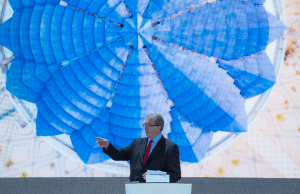If we think of a ‘meeting’ as similar to eating food, the food we eat is like the content of a meeting. The reason we eat it and the type of food will depend on a number of reasons, but they broadly fall under three headings.
Some meetings are purely to consume food. It is about sustenance, the sharing of knowledge or information and is often solving an immediate need or hunger. Some are more of a meal where discussion can take place, ideas get challenged; brainstorming will take place and even some networking. Then there are the meetings that are more of an experience. They do all of the elements of the previous types of meetings, but they also do a whole lot more. It is the difference between eating a snack because we are hungry, sitting down to have something to eat and going to a restaurant for a meal.
In each case there is food to eat. At each meeting there is content to be consumed. In each case the food needs to be prepared, packaged and provided, but in each case the way this is done depends on what is trying to be achieved. A meeting to discuss whether we need to buy a piece of equipment is necessary, but does not require a lot of effort to plan and set up. A meeting to define the buying practice of the business needs more time and consideration. A meeting to define the strategy for the business will need a lot more planning, thought and execution. Each satisfies a need but has more depth to it.
A perfect meeting is defined by the experience the delegate has and the value it adds in terms of how it can be digested later. It is like a restaurant, the perfect meal is defined by the customers’ experience and satisfaction. Just because the Chef thinks it is a great meal, or the Head Waiter and Bar Tender thinks it is a great meal, does not make it a great meal. The same applies to the meeting or event. What the supplier thinks, or the meeting planner thinks, or the venue provider thinks, is not the deciding factor. It is what the delegate thinks and can do as a result.
Just as in a restaurant, if the Chef thinks he or she is the most important element of the visit, or the waiters think they are the most important element, then all that is achieved is disharmony in the restaurant, which ultimately affects the customer’s experience. The key is how well each area can harmonise with each other to create a satisfied customer.
An experience is created when all parties work together and understand the value of their collective contribution and that each one has a chance to add to the overall experience, but also has a chance to damage the overall experience. The food can be wonderful, but if the plates or cutlery are dirty, or the wrong ones for the food, then the wonderful food is undermined completely and the experience is broken. Equally, trying to design a meeting by focusing on designing a new plate or finding new cutlery is of no use if the food is not good enough.
If we take the food example to another level, we also know that a person’s health is important and eating correctly is an essential part of that. Constantly eating snacks is not good for us. We need to eat sensibly, in a balanced way and at regular intervals. People who care about their health will consider this and monitor what they eat, how often and how they eat it. If they know they are going out for a dinner that evening, they will likely eat lightly during the day. Those that don’t plan and consider the balance they need are the ones that create health issues for themselves.
Organisations are no different. The health of an organisation requires good communication and knowledge. Meetings facilitate communication and knowledge, but without some forethought or planning it is possible that people end up eating all day! Worse still, they end up eating the wrong foods and the food is not properly digested or burnt off, thus creating health issues.
The problem is made worse by people seeing fast food as the answer to all their nutritional needs and even as a cost effective way to sustain themselves or their organisations. The future is not about designing a meeting, but in how to create a nutritional plan that balances all the needs. This will include snacks, meals and restaurant dinners.
Paul Bridle













